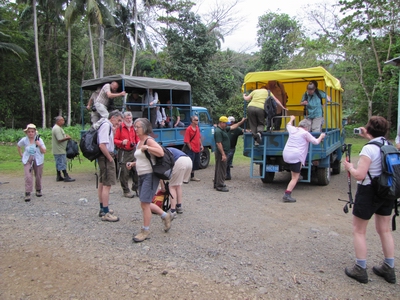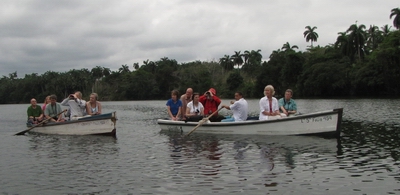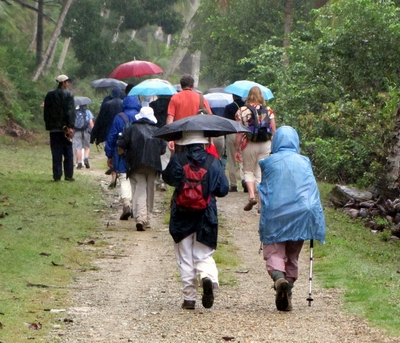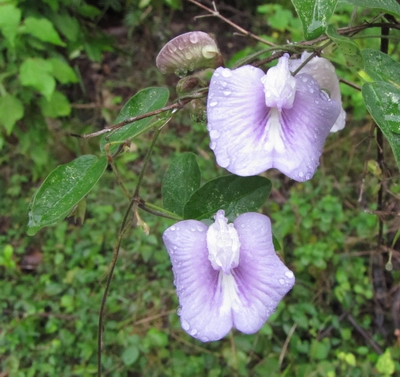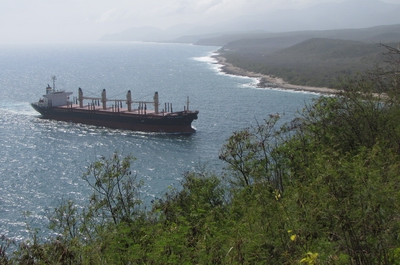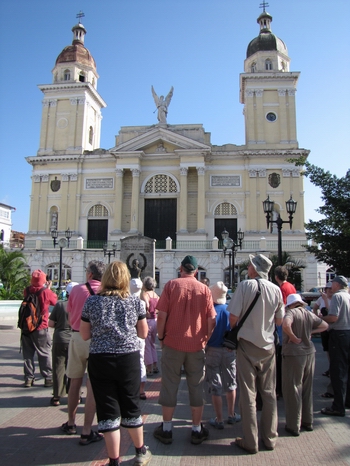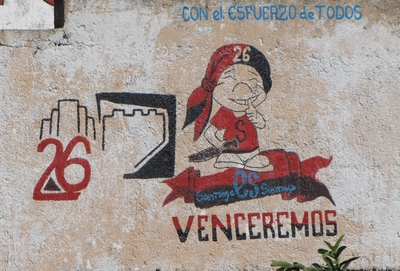|
Wall slogan on barn near
Santiago
|
|
The queues for the lift hit with
a vengeance this morning, with some having to wait 20 minutes to get
out of the hotel with their cases - and that was after queuing earlier
to get down to breakfast - not a great advert for this hotel.
We left Santiago via the Revolution Square, with its gigantic statue
of Antonio Maceo on his angular bronze horse, and headed through
the rolling hills of the Sierra Maestra to the village of El Cobre. En
route were many examples of the fusion of popular culture and political
expressions - a cartoon pirate figure taken from a local theme park had
been merged with the 26 July Moncada attack symbol to form a new
Santiago identity.
This former copper mining town is now a pilgrimage site, with sellers
of sunflower wreaths lining the road. The church is dedicated to Cuba's
patron saint, and contains the icon of the Virgin fished from the sea
in 1606 by three fishermen 'about to be shipwrecked'. In the
church were collections of sporting medals and little metal body parts
left by believers to give thanks for some achievement or recovery. All
very strange......but it was a sunny site and the hills looked inviting.
|
Continuing on through the hills
we eventually reached the main road from Santiago that led us to
Bayamo, where we were dropped off in the centre and straight into the
Casa de la Trova for a fruity rum cocktail and yet another chance to
hear "Guantanamera". Escaping this we had a short tour of the centre,
with its pedestrian main shopping street. This tour included a dip into
one of the (few) shops selling goods in the national currency, as
opposed to the convertible currency (CUC) linked to the dollar. As we
had no need for washing machine parts, shower curtains, or bright green
liquid (brake fluid we were informed), we left to catch the coach
again, to head for the Soviet-style Sierra Maestra hotel for a snack
lunch.
After lunch, and another Buccanero (beer), it was hard to stay awake in
the coach although we were jolted awake with a coffee stop at Las
Tunas. Eventually around 6pm we pulled up at another hotel we weren't
expecting to stay at - the Colon in Camaguey. Luckily this was bang in
the centre of the town, and had a great atmosphere with tiled floors,
high ceilings and a courtyard. The smallish rooms were on the first
floor overlooking a long corridor-like central well reminiscent of a
prison....
Monday night was clearly not the
night in Camaguey, as the centre was pretty dead, although we did get a
little canned music in one bar!
|
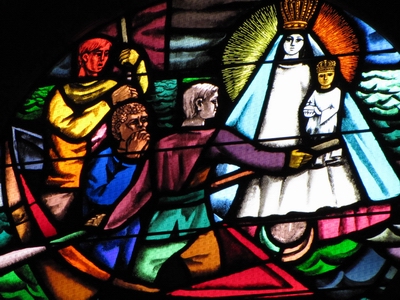
Three men in a boat - stained glass window in El Cobre
church of the Virgen de la Caridad (or the Santeria goddess of love and
water, Oshún)
|
|
